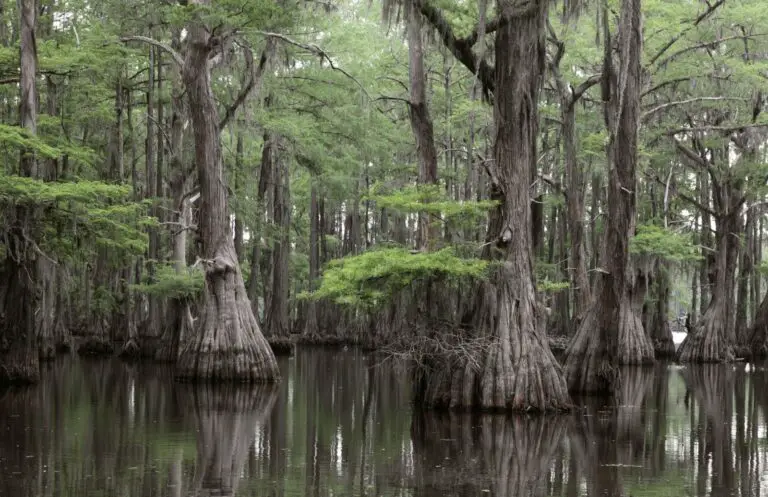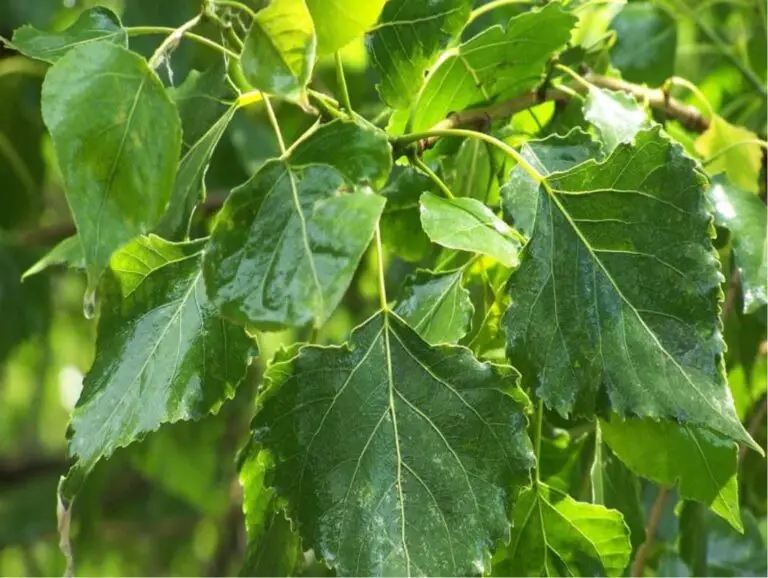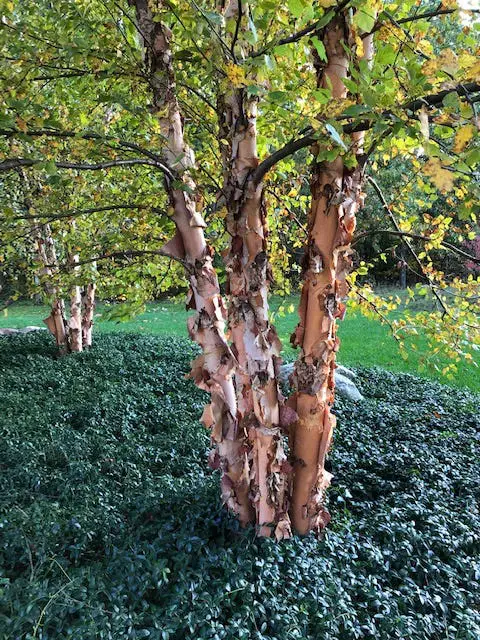Silent Sentinels: Embracing the Majesty of Black Gum in Garden Sanctuaries
Gardens are our personal oases, the living canvases we tend to with affection and attention, cultivating beauty in every corner. And as gardeners, we seek to harmonize nature’s wonders with our visions of peace and tranquility. Thus, the inclusion of certain elements is not just about aesthetics; it’s about honoring nature’s gifts and promoting balance within our slice of the environment. The Black Gum tree, Nyssa sylvatica, is one such gift – a serene sentinel of the forest, yet a majestic centerpiece for our gardens.
In this exploration, we’ll unfurl the many layers of the Black Gum’s allure, uncover its lore, and share how you can elevate your garden design, not just with beauty but with a conscious nod to ecological well-being.

Growing Black Gum Trees
Dubbed the ‘tupelo’ or ‘Black Tupelo’ by some, Nyssa sylvatica is no stranger to the sylvan landscapes of America’s east coast. For gardeners, the challenge lies not in the tree’s inherent ability to thrive, but in understanding that this particular sentinel prefers a certain kind of serenity – a well-balanced mix of sun and shade, moist rich soil, and a respectful interplay of eco-friendly gardening practices. If you are considering this tree for your sanctuary, know that patience is key, as it is a slow-growing species. But as its maturity unfolds, what resonates is not just the gentle cacophony of your garden in motion but the deeper, quieter symphony that the Black Gum brings to life.
Planting Considerations
When setting out to plant Black Gums, choose an area that boasts acidic to slightly alkaline soil (ph 5 to 5.7 is optimal). Sunlight remains a vital ingredient; however, these trees also thrive under partial shade, making them versatile additions to various garden spaces. Be sure to provide ample room for growth, as they are known to spread out dramatically. A note of caution for urban gardens: Black Gums, with their expansive root systems, may pose issues if planted too close to structures.
Care and Maintenance
Black Gums are generally hardy, but like all living things, they require a bit of TLC. Regular watering, especially during dry spells, is appreciated. Pruning should be done during fall or winter when growth is dormant to shape the young tree. However, with older specimens, it’s essential to keep an eye on rot-prone limbs and cankers, which may necessitate professional arborist attention.
Aesthetic Appeal
The beauty of the Black Gum is perhaps its most compelling trait. It stands tall, a silhouette of strength, yet is graced with delicate, glossy foliage that shifts with the seasons, from rich green in the summer to a symphony of red, orange, and yellow in the autumn. Its resilience to air pollution and urban settings further solidify its role as a beacon of earth-friendly elegance in any garden design.
Year-Round Elegance
The Black Gum offers year-round delight. In spring, it announces its presence with a flourish of tiny white flowers, a gracious host to visiting pollinators. In fall, its leaves paint a portrait of warmth against the cool backdrop of your garden. Throughout winter, its gray, deeply fissured bark provides a solemn yet striking contrast to the snowy landscape.
Symbiosis of Senses
Gardens are sensory experiences, and the Black Gum amplifies this with its fruit, the ‘black gumball,’ which offers sustenance to wildlife. Its thick, egg-shaped drupes are cherished by birds and small mammals, underlining the tree’s role as a community hub for biodiversity. For the human observer, the sight of these sooty jewels, the touch of the cool, wizened bark, and the very air of its vicinity encapsulate what gardens are meant to be – stories of life, told in silence.
Ecological Benefits
Black Gum trees are not just aesthetically pleasing; they are ecological workhorses. Their extensive root system acts as a natural sponge, soaking up excess water and preventing soil erosion. Underground, their roots form a symbiotic relationship with certain fungi, enriching the soil ecosystem.
Biodiversity Magnets
No garden is an island, and the Black Gum knows this well. By bearing fruit that sustains a variety of wildlife, it actively supports the complex web of life. In addition, its dense canopies offer shelter and nesting sites, contributing to the preservation of local fauna.

Environmental Warrior in the Garden
The Black Gum’s rich foliage captures carbon, its shade mitigates the ‘urban heat island effect,’ and its overall impact on the local microclimate is nothing short of heroic. It’s a reminder that gardening is not just about cultivation; it’s about conservation. Each Black Gum you plant is a vote for a greener, healthier planet.
Seasonal Changes
Witnessing the seasonal transformation of a Black Gum is akin to observing nature’s ritual. It is a nod to the passing of time, an ode to change, and a promise of the new. In the spring, it is a fountain of awakening life; in summer, a stalwart presence against the elements. Fall sees it ablaze with color, and in winter, it stands stark, its branches outstretched in quiet dignity.
Navigating Nature’s Calendar
Adapting to the Black Gum’s seasonal cadence is intuitive gardening at its best. Choose complementary plants that bloom when the tree’s canopy is bare, allowing a dance of color and texture year-round. Additionally, understanding this cadence primes your garden for wildlife interactions, creating dynamic spaces that evolve with every passing season.
Timeless Elegance in Transition
The Black Gum’s autumnal display is an event not to be missed. The fiery hues that engulf its boughs rival the most exquisite of human artworks, yet here is a creation, not of paint and canvas, but of chlorophyll, carotenes, and anthocyanins. It’s during these moments, as the colors blanket your garden floor, that the Black Gum truly earns its keep in your sanctuary.
Conclusion
The Black Gum tree is more than a garden component; it’s a celebration of the inherent splendor of the natural world. By welcoming this gentle giant into your green space, you forge a deeper connection with the earth and all its inhabitants. Each Black Gum adds another layer of peace, another note of harmony, and another chapter to the evolving narrative of your garden.
In our pursuits to create garden sanctuaries, it is imperative that we remember our roots – the roots of the plants we nurture, the roots of the ecosystems we touch, and the roots of our appreciation for every living organism. The Black Gum is a guardian, a provider, and an artist. It asks not for grand displays or boundless admiration, only for a space to call its own, and the respect it deserves.
Garden enthusiasts, it is our privilege and responsibility to weave together beauty and balance. In the grand tapestry of the natural world, the Black Gum is a thread worth treasuring. May your gardens be sanctuaries not only for you, but for all life that seeks refuge in its hallowed grounds.






